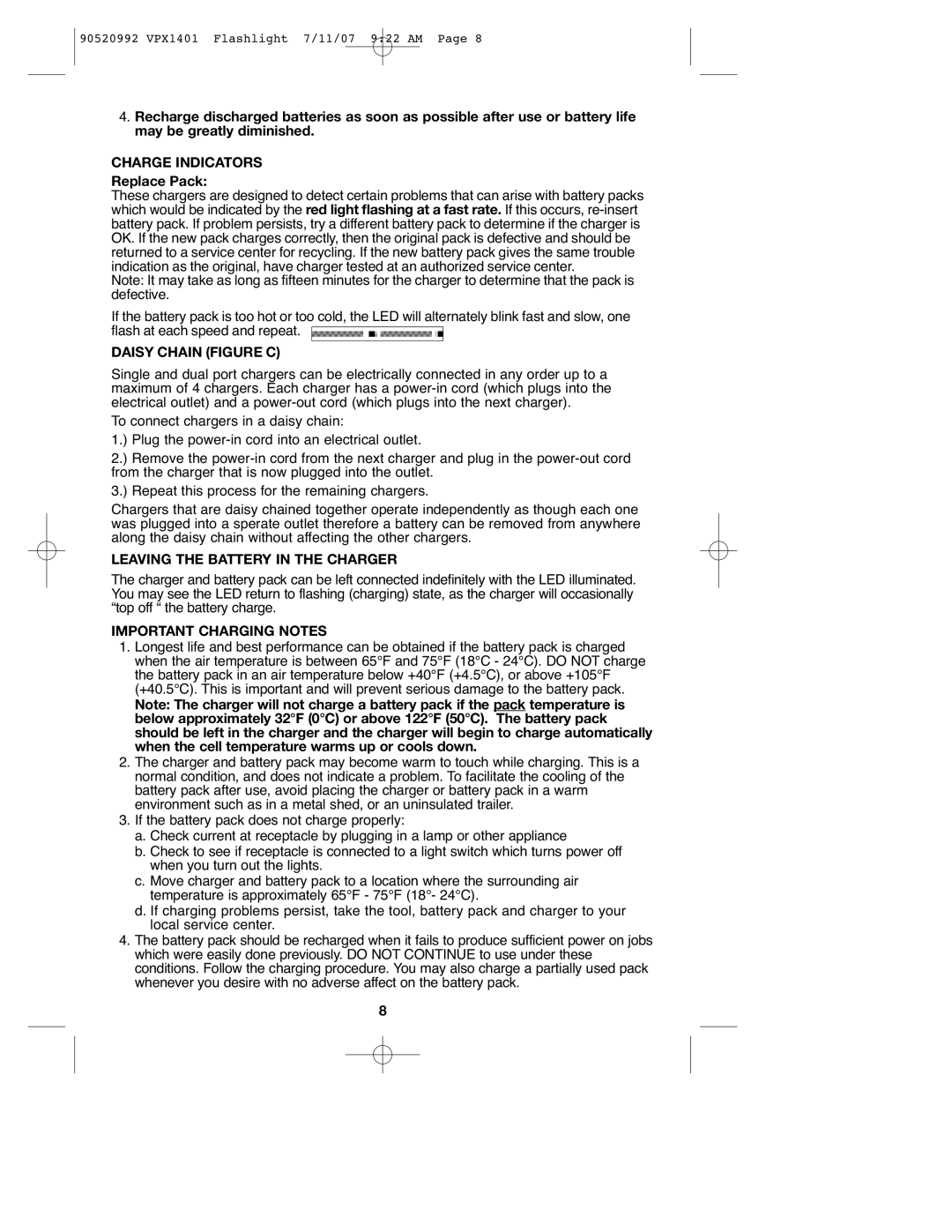
90520992 VPX1401 Flashlight 7/11/07 9:22 AM Page 8
4.Recharge discharged batteries as soon as possible after use or battery life may be greatly diminished.
CHARGE INDICATORS
Replace Pack:
These chargers are designed to detect certain problems that can arise with battery packs which would be indicated by the red light flashing at a fast rate. If this occurs,
Note: It may take as long as fifteen minutes for the charger to determine that the pack is defective.
If the battery pack is too hot or too cold, the LED will alternately blink fast and slow, one flash at each speed and repeat. ![]()
DAISY CHAIN (FIGURE C)
Single and dual port chargers can be electrically connected in any order up to a maximum of 4 chargers. Each charger has a
To connect chargers in a daisy chain:
1.) Plug the
2.) Remove the
3.) Repeat this process for the remaining chargers.
Chargers that are daisy chained together operate independently as though each one was plugged into a sperate outlet therefore a battery can be removed from anywhere along the daisy chain without affecting the other chargers.
LEAVING THE BATTERY IN THE CHARGER
The charger and battery pack can be left connected indefinitely with the LED illuminated. You may see the LED return to flashing (charging) state, as the charger will occasionally “top off “ the battery charge.
IMPORTANT CHARGING NOTES
1.Longest life and best performance can be obtained if the battery pack is charged when the air temperature is between 65°F and 75°F (18°C - 24°C). DO NOT charge the battery pack in an air temperature below +40°F (+4.5°C), or above +105°F (+40.5°C). This is important and will prevent serious damage to the battery pack.
Note: The charger will not charge a battery pack if the pack temperature is below approximately 32°F (0°C) or above 122°F (50°C). The battery pack should be left in the charger and the charger will begin to charge automatically when the cell temperature warms up or cools down.
2.The charger and battery pack may become warm to touch while charging. This is a normal condition, and does not indicate a problem. To facilitate the cooling of the battery pack after use, avoid placing the charger or battery pack in a warm environment such as in a metal shed, or an uninsulated trailer.
3.If the battery pack does not charge properly:
a.Check current at receptacle by plugging in a lamp or other appliance
b.Check to see if receptacle is connected to a light switch which turns power off when you turn out the lights.
c.Move charger and battery pack to a location where the surrounding air temperature is approximately 65°F - 75°F (18°- 24°C).
d.If charging problems persist, take the tool, battery pack and charger to your local service center.
4.The battery pack should be recharged when it fails to produce sufficient power on jobs which were easily done previously. DO NOT CONTINUE to use under these conditions. Follow the charging procedure. You may also charge a partially used pack whenever you desire with no adverse affect on the battery pack.
8
